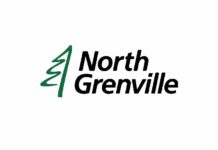by Jim Bertram
Further to an earlier article on the subject of municipal taxation, I would like to reiterate that, according to the Association of Municipalities of Ontario, approximately 27 to 30 per cent of municipal and county taxes in Ontario are used locally to pay for provincially mandated services, programs, administrative practices and so on. Your provincial government chooses to abuse its own financial system at will with the knowledge that, when pressed, it can also force local taxpayers to lighten the load for them when and as they choose, no matter what party is in power.
On this subject, an interesting presentation of pertinent information was brought forward by Brian Carré, CAO of the municipality of North Grenville. The information offered gave an unsettling picture of the fiscal (taxation) future for municipalities. One scenario presented was for an average tax levy increase in the range of 6%, if a 25% reduction in the Ontario Municipal Partnership Fund (OMPF) were to occur. Among other causes for this tax levy increase was the substantial municipal infrastructure deficit in the province, running to approximately sixty billion dollars. As I heard that amount, I wondered how much smaller that amount would be if the province were not siphoning off municipal taxes on a great scale to pay for provincially legislated and mandated projects.
Mr. Carré’s VERY useful presentation clearly indicated the growth in financial responsibility of municipalities compared with the province. The province’s responsibilities declined sharply for the period shown, while those of municipalities climbed sharply. A question one might have in this regard is: WHY? Is there a connection between the growth of municipal responsibilities shown in the chart and the strong declines shown in the provincial statistics representing the provincial side of the chart? And if so, why is it important?
Well, yes. There IS a connection. As mentioned before, it is to be found in the massive offloading (downloading, etc) of financial responsibility by the province onto the shoulders of the municipal property tax payer. Of course, some have said to me: “So what – there is only one tax payer, right?” Well, actually yes ‑ one tax payer, but only at the municipal level. However, at the provincial level, there are MANY sources of revenue, including the following: Personal Income Tax; Sales Tax; Education Property Tax; Corporations Tax; Employer Health Tax; Gasoline and Fuel Tax; Ontario Health Premium; other taxes (3.6%); non‑tax revenue; Federal Transfers; Income from government business enterprises.
As you can see, the province has “many tax payers” to draw from in a varied and revenue‑rich taxation environment. The municipality has basically ONE source of income: the municipal property tax, augmented by fees charged for some services offered to local residents. The points I am making are the following:
- The Province has a rich and varied set of revenue sources;
- The Province has the power to make legislative decisions for which they need not pay. They often choose to pass the costs of their decision‑making on to municipalities to be paid from the small, much poorer revenue source of municipalities described above.
- The municipality may strain under the additional weight of provincial downloads/offloads to the extent that it must ignore important core municipal responsibilities such as roads, sidewalks and other infrastructure.
- The municipality has limited tools at its disposal to avoid the sheer imposition of financial responsibilities onto the shoulders of local taxpayers by the province.
However, at the very least, your local Council does have some potent tools at its disposal, if it is motivated to work in the interest of taxpaying residents and use them:
- Council can establish leadership by ensuring, by various means, that the community is informed and aware on this subject. If they have any questions on this issue, I’ll be pleased to help them.
- Council can establish a project, or “task force”, to develop an active strategy to combat the ever growing, noxious and abusive trend of the provincial government to create a rapidly growing weight of taxes to be imposed on the municipal property‑tax payer.
- That “task force” can and should establish an active alliance with the Association of Municipalities of Ontario and other appropriate bodies to develop strength in numbers and enhance the power of their arguments.
- Council could ally itself with those residents willing to promote this issue in a variety of ways.
- Council could host a conference on the subject of municipal taxation, which would have as its mandate to look at ways to improve the municipal taxation scenario in favour of taxpayers, as opposed to a scenario which favours government. The role of, and reform of, MPAC would be one subject of discussion among others.
- Members of Council could embrace the goal of reforming our local tax system and speak loudly and often on the subject. They should start doing this approximately now.
Neighbours, you have heard this theme from me before, especially during the election campaign of 2018. While the campaign is over, the issue brought out then, and in this article, has only become more urgent. It may be ignored, but only at the peril of the financial status of many homeowners and the discomfort and dissatisfaction of all sentient municipal taxpayers. Be aware of this problem and make Council aware of your concerns. And, as always, I will be pleased to hear of your ideas and concerns at: jaybert12@yahoo.com.
Be well. Be concerned. Be active. Our future as home and business owners depends on our attention and our active engagement now as well as at election time.







